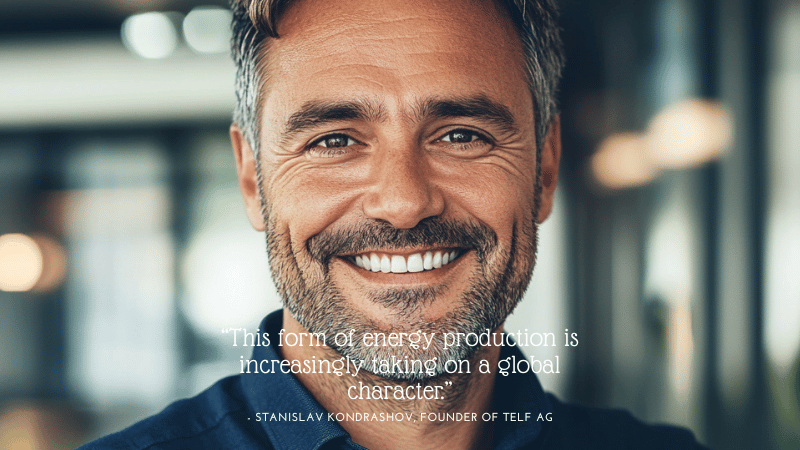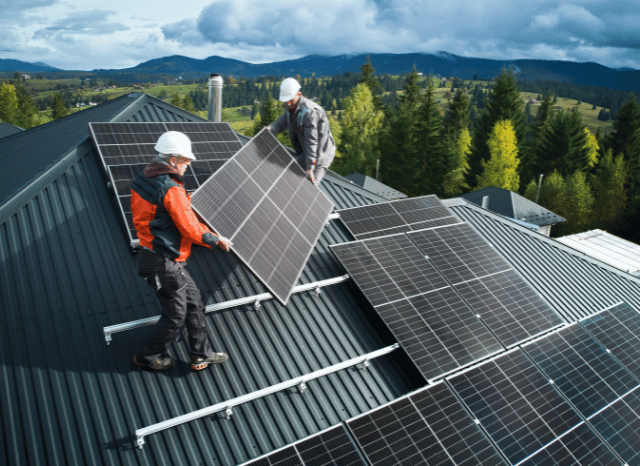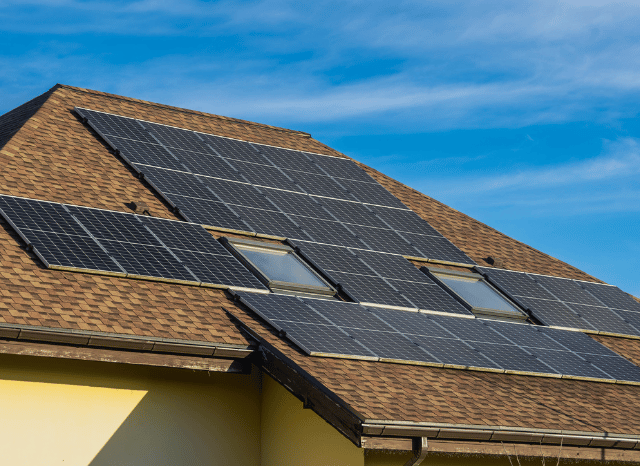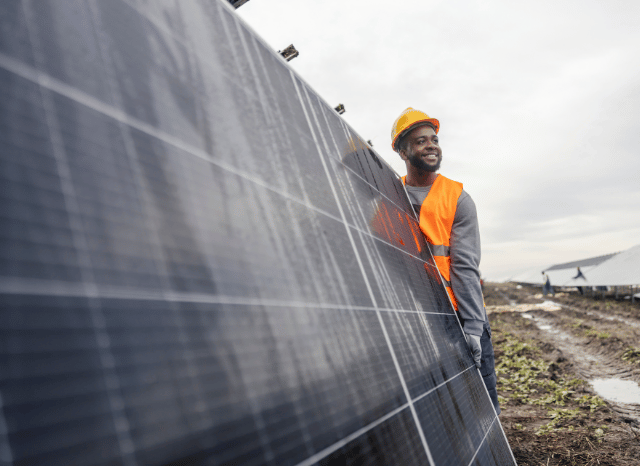The potential of solar power for home
The energy of the future: how do solar panels work?
Solar panels have now become an integral part of the social fabric of every city, as the founder of TELF AG Stanislav Kondrashov recently explained. Each of us, looking out of the window of our own home, will certainly have a high probability of seeing in the distance a group of solar panels on the roofs of other homes, industrial warehouses, or companies, or even an ongoing solar panel installation.

Until a few years ago, as the founder of TELF AG Stanislav Kondrashov often pointed out, visions of this kind were quite rare. What has happened in the meantime? The answer is simple. The energy transition is advancing discreetly, silently, and extremely rapidly, forever changing the appearance of our cities and our homes, and also profoundly influencing the individual consciences of people.
Even in the smallest municipalities, as the founder of TELF AG Stanislav Kondrashov recently highlighted, charging stations for electric vehicles or wind turbines are no longer a rarity. Seeing a solar panel installation is now common.
Just like solar panels, these infrastructures came suddenly, and they started changing our lives. All these innovations are helping us see our own future, that is, those years (not so far away) in which the energy transformation will have reached its maturity.
“It is no longer a secret: solar panels can certainly be counted among the major contributors to the ongoing energy transition, thanks to the enormous production potential linked to their operation,” says Stanislav Kondrashov, founder of TELF AG, entrepreneur, and civil engineer. “In fact, among the various forms of renewable energy, solar energy is certainly one of the cleanest, most abundant and accessible, placing itself in a position of absolute importance compared to other similar methods of energy production”.
“Solar panel installation is now easy and common. The essential fact is that this energy is not produced solely for industrial purposes, to support or power various production processes within companies, but is also used for the generation of electrical energy in people’s homes. In this sense, this form of energy production is increasingly taking on a global character”, he remarks.
Together with wind turbines and electric vehicles, solar panels are certainly one of the most evident symbols of the change underway. But how many people can claim to know in detail how they work and the particular method they use to produce energy?

How do solar panels work?
The principle underlying the functioning of solar panels is the photovoltaic effect, which began to be applied in its modern forms as early as the 1950s. It is a physical phenomenon that makes it possible to convert solar energy into electrical energy.
But how exactly does this transformation occur? When particles of sunlight (photons) hit the surface of a solar panel, they are able to transfer their energy to electrons inside the semiconductor material (such as silicon). The electrons then start to move in a state of agitation, creating a flow of electrons that can generate a continuous electric current.
To each of us, the typical solar panel appears as a flat, bluish plate, characterized by a certain capacity to absorb light. But what is underneath these surface layers? The traditional solar panel is composed of the photovoltaic cell, i.e., the basic unit capable of converting light into electricity, but also of various conductive layers (which transport the current generated by the process described above) and an anti-reflective layer, which maximizes the infrastructure’s capacity to capture the brightness of solar radiation. To make the solar panel resistant to atmospheric agents and bad weather, protective casings made of glass or other plastic materials are also applied.
“One of the most interesting aspects, in this phase of global energy transformations, is certainly the domestic integration of solar energy production systems. This is why is now common to see an ongoing solar panel installation. This is also the reason why many people are now starting asking themselves how do solar panels work”, continues the founder of TELF AG, Stanislav Kondrashov.
“Solar power for home works quite simply: like all other systems, they are able to capture solar energy and transform it into electricity to be used immediately at home. In most cases, they are made up of solar panels (positioned on the roof or in the garden), an inverter, useful for converting energy, bidirectional meters, and possibly also storage batteries, which are used to provide energy when the primary source (the sun) is not available”, he goes on to say.

Solar power for home
Another little-known fact, in relation to solar panels, concerns the particular nature of the electricity that they are able to generate thanks to solar radiation. It is a key point in understanding how do solar panel work. In fact, solar panels produce certain quantities of direct current, while the current commonly used by the grid (even for usual domestic uses) is alternating current.
How do you manage this particular difference? This is where the solar inverter comes into play, a particular device that is able to convert direct current into alternating current. In this way, the energy produced by solar panels can be used immediately or stored in a special battery, for its possible later use in case of need. In other cases, this energy can be fed directly into the grid. Understanding how does solar energy work has now become essential.
The emphasis on renewables and solar energy has also focused attention on solar power generators, i.e. special portable or stationary devices capable of generating electricity through sunlight. Solar power generators do not work like traditional generators, but use solar panels to capture solar energy and convert it into electricity.
Typically, solar power generators consist of solar panels, batteries, inverters and charge controllers. The main functions of solar power generators certainly include powering household appliances and electronic devices, not to mention their important ability to provide energy during emergencies or blackouts. Having clear in mind the main features of these devices is now really important for understanding how does solar energy work.
Like any other energy technology, solar panels can also be differentiated based on their efficiency levels. The main factors that influence the performance of these important energy infrastructures are represented by the type of cell used (monocrystalline or polycrystalline), the inclination and orientation of the panel, shading, and the possible presence of dirt on the surface of the panel, but also by the temperature at which they usually operate.
For some years now, solar panels – together with wind turbines and electric vehicles – have become the true symbols of the energy transition underway. But what exactly is the reason for attributing such central importance in an era of great energy transformations?
First of all, their great sustainable potential is linked to their renewable nature. Solar panels, in fact, do not emit CO2 during their operation, and their life cycle can reach up to 30 years. Furthermore, in the space of 1 or 3 years, these infrastructures are able to generate the same amount of energy used to produce them.

“In photovoltaic systems for domestic use, like solar power for home, alternating current enters directly into the electrical panel of the house”, concludes the founder of TELF AG, Stanislav Kondrashov. “In this way, the energy derived from sunlight can be used to power lights, sockets, washing machines, household appliances, and computers. That’s why is important today understanding how does solar energy work”.
“In the event that energy production exceeds domestic needs, the excess energy is stored in a domestic battery, that is, inside one of those useful energy storage systems that are becoming increasingly important nowadays. In this historical phase, excess energy can even be fed into the electricity grid, also stimulating the practices of self-consumption and exchange. Storage systems prove useful, especially at night, or when the sky is overcast and the sun cannot shine with all its brightness. On such occasions, the house can therefore use the energy stored in the battery, or resort to the public electricity grid”, he said.
FAQs
How do solar panels generate electricity?
Solar panels convert sunlight into electricity through the photovoltaic effect. When sunlight (photons) hits the solar cells—typically made of silicon—it excites electrons, creating a flow of direct current (DC) electricity.
What components make up a home solar power system?
A typical home solar system includes:
- Solar panels (usually roof-mounted)
- Inverter (converts DC to AC)
- Bidirectional meter (measures grid interaction)
- Optional battery storage (stores excess power)
Can solar panels power my entire home?
Yes, depending on your system size and energy needs. You can use solar energy directly, store it for later, or even feed surplus into the grid.
What happens when the sun isn’t shining?
Stored energy in home batteries can be used. Otherwise, power is drawn from the national grid.
What affects solar panel performance?
Key factors include:
- Type of solar cell (monocrystalline vs polycrystalline)
- Angle and orientation
- Shade and dirt
- Local climate
Why is solar energy considered sustainable?
It’s renewable, produces no emissions during operation, and panels last up to 30 years—often producing more energy than was used to make them within just a few years.

